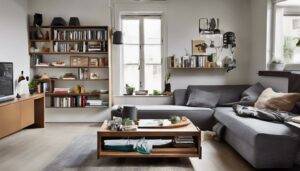Moving to a Cozier Space: Tips to Help You Out
As we prepare to move into a smaller home, it’s vital to approach the shift with a clear plan. We’ll need to assess our belongings meticulously, deciding what truly adds value to our lives and what doesn’t. Prioritizing essentials is key, but how do we effectively declutter and choose multifunctional furniture that maximizes our space? And what about personalizing our new, smaller space while keeping it organized? Let’s explore some practical strategies that can ease this process and make our new home feel both functional and welcoming.
Assess Your Belongings
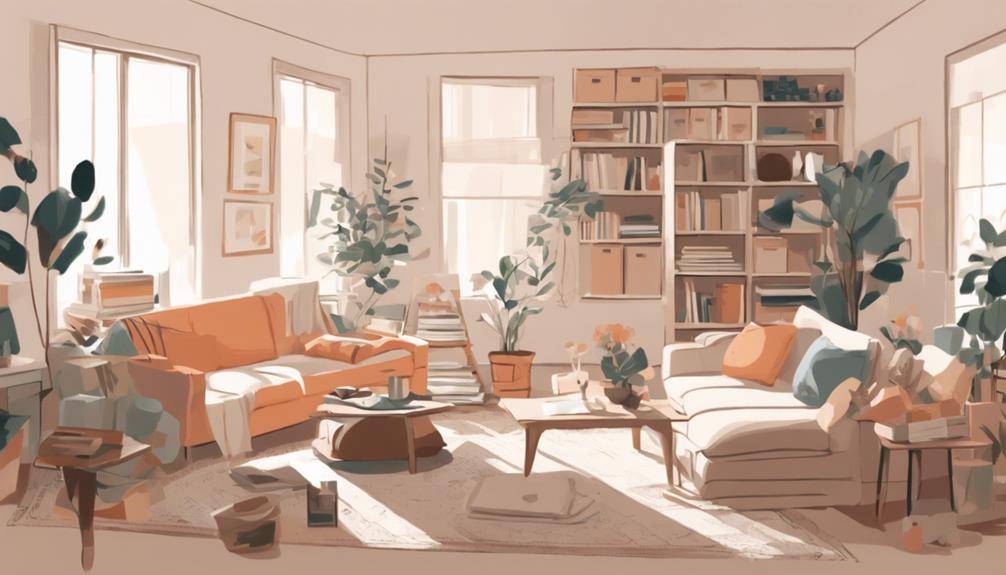
Evaluating your belongings is an essential first step when preparing to move into a smaller home. It’s a process that goes beyond merely sorting through items. We’ve accumulated so much over the years, and it’s time to take a hard look at what we truly need and what we can let go of. Emotional attachment can make this challenging, but it’s vital for a smooth changeover.
First, let’s break it down. We should start by categorizing our items into three groups: keep, donate, and discard. This method helps us see what we have and make realistic decisions. When we’re dealing with items that hold sentimental value, it’s helpful to ask ourselves if we can cherish the memory without keeping the physical object. Sometimes, taking a photo of an item can preserve the memory while freeing up physical space.
Our packing strategies also play a significant role. We need to be thoughtful about what goes into each box. Labeling boxes by room and content can save us a lot of hassle when we’re unpacking. Additionally, using uniform-sized boxes can make stacking and transporting easier.
We should also consider the utility of each item. If something hasn’t been used in the past year, it’s probably not essential. This rule can help us cut down on clutter and focus on what’s truly necessary for our new, smaller space.
In the end, evaluating our belongings with a clear plan and a bit of emotional detachment can make the intimidating task of downsizing more manageable. Let’s embrace the opportunity to simplify and create a more organized, stress-free environment.
Prioritize Essentials
Now that we’ve assessed our belongings and decided what to keep, donate, or discard, it’s time to focus on prioritizing the essentials for our new, smaller home. Embracing a minimalist mindset will help us identify the most important items, allowing us to live comfortably without the clutter.
First, let’s consider the basic necessities that support our daily routines. These essential items will vary from person to person, but there are common categories we should all focus on:
- Furniture: Opt for multi-functional pieces that serve more than one purpose. A sofa bed or an ottoman with storage can save space and still offer comfort.
- Kitchenware: Stick to the essentials like a few versatile pots and pans, quality knives, and basic utensils. A minimalist kitchen is easier to manage and keeps counters clutter-free.
- Clothing: Choose a curated wardrobe with pieces that mix and match well. Think about the climate and your lifestyle to determine the essentials. A capsule wardrobe can help minimize the space needed.
- Sentimental Items: Decide which keepsakes hold the most value and find ways to incorporate them into our new home without overwhelming the space. A single photo album or a digital archive can preserve memories without taking up much room.
Declutter Effectively
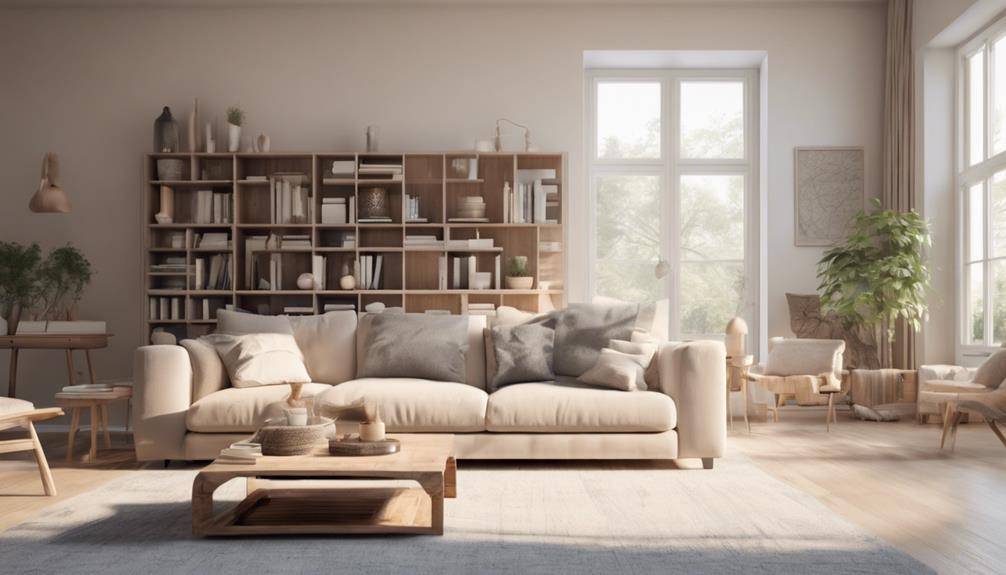
How do we begin the intimidating task of decluttering effectively? Let’s start by adopting a minimalist mindset. This means focusing on what truly adds value to our lives and letting go of the rest. First, we should go room by room, tackling one area at a time. This approach helps us stay organized and not get overwhelmed.
Before diving into the sorting process, it’s important to prepare emotionally. We often hold onto items because of emotional attachment, thinking they define our memories or identity. However, we need to remind ourselves that memories reside in our hearts and minds, not in objects. A helpful tactic is to ask ourselves if we’ve used or appreciated an item in the past year. If the answer is no, it might be time to let it go.
Let’s categorize our belongings into three piles: keep, donate, and discard. The keep pile should be reserved for essentials and items that bring us joy or serve a practical purpose. For the donate pile, consider the good we can do by giving items a second life with someone who needs them more. The discard pile is for items that are broken, worn out, or no longer usable.
As we sift through our belongings, we should also pay attention to duplicates. Do we really need three sets of measuring cups or five phone chargers? One of each is usually sufficient.
Decluttering effectively is a vital step toward enjoying our new, smaller space. By embracing a minimalist mindset and overcoming emotional attachment, we can make this process smoother and more fulfilling.
Maximize Storage Solutions
Now that we’ve decluttered, let’s talk about making the most of our storage space. By using vertical space and opting for multi-functional furniture, we can keep our smaller homes organized and spacious. These strategies will help us create a comfortable and efficient living environment.
Utilize Vertical Space
When moving into a smaller home, one of the most effective strategies is to utilize vertical space to maximize storage solutions. By thinking vertically, we can create more room while also maintaining a visually appealing environment. Here are a few ways to make the most of our vertical space:
- Install Shelves: Adding shelves high up on walls can free up floor space. We can use these shelves to display items like books, plants, or even wall art to add a decorative touch.
- Use Decorative Bins: Place decorative bins on top of cabinets or bookcases. These bins can store seasonal clothing, extra linens, or other items we don’t use daily, keeping them out of sight but within reach.
- Hang Hooks and Racks: Hooks and racks can be placed behind doors or on walls to hang bags, hats, and coats. This keeps our entryway clear and organized without needing bulky furniture.
- Maximize Closet Space: Use vertical space in closets by adding extra rods or shelves. We can even install organizers that stack vertically to hold shoes, accessories, and folded clothes efficiently.
Multi-Functional Furniture
Making the most of vertical space helps us keep things organized, but it’s equally important to choose furniture that serves multiple purposes. When moving into a smaller home, multi-functional furniture becomes our best friend. Space saving designs can help us maximize every square inch, turning potential clutter zones into streamlined living areas.
Think about convertible furniture. A sofa that transforms into a bed provides extra sleeping space without the need for a guest room. Coffee tables with hidden storage or lift-top features can keep our living rooms tidy while also providing a convenient workspace. Dining tables that expand or fold away can adapt to our needs, whether we’re having a quiet dinner or hosting friends.
Another great option is storage ottomans. They offer a place to sit, prop up our feet, and store items like blankets or games. Wall-mounted desks fold down when we need them and disappear when we don’t, freeing up precious floor space.
Opt for Multifunctional Furniture
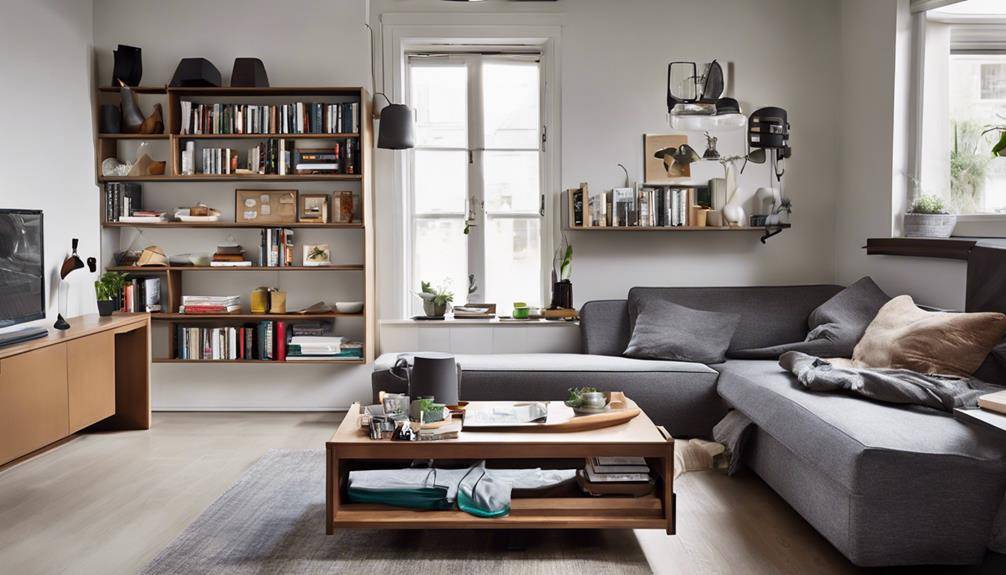
One of the smartest strategies for maximizing space in a smaller home is to opt for multifunctional furniture. When we’re dealing with limited square footage, every piece of furniture needs to earn its keep. That’s where space-saving designs come in handy. By choosing items that serve multiple purposes, we can make the most of our living space without feeling cramped or cluttered.
Here are four great examples of multifunctional furniture that can help us achieve this:
- Sofa Beds: Convertible pieces like sofa beds are a classic example of multifunctional furniture. They provide comfortable seating during the day and transform into a cozy bed at night, perfect for guests or even for ourselves if we live in a studio apartment.
- Storage Ottomans: These are fantastic for hiding away clutter while still providing a place to rest our feet. Some even come with trays, so they can double as coffee tables when needed.
- Expandable Dining Tables: These tables can be compact for everyday use but expand when we have guests over. It’s a simple yet effective way to accommodate more people without permanently sacrificing space.
- Wall-Mounted Desks: Ideal for small home offices, these desks can be folded away when not in use, freeing up valuable floor space. Some designs even include built-in shelves for extra storage.
Use Vertical Space
When space is tight, we need to think upward. Installing floating shelves and utilizing tall cabinets can help us maximize storage without taking up floor space. Don’t forget about wall hooks for keeping items like keys and bags organized.
Install Floating Shelves
As we shift into a smaller living space, it’s crucial to maximize every inch of available room. One effective way to do this is by installing floating shelves. These shelves not only provide extra storage but also add a modern touch to our decor. Let’s explore some practical tips and considerations for making the most of floating shelves.
First, let’s talk about floating shelf materials. We’ve got a variety of options like wood, glass, and metal. Wood is classic and versatile, glass adds a sleek and airy feel, and metal offers an industrial vibe. Choosing the right material depends on our overall aesthetic and the weight of the items we’ll store.
Now, onto some shelf installation tips. Here are four steps to get us started:
- Measure and mark: Use a level to verify our shelves are straight. Mark the wall where the brackets will go.
- Choose the right anchors: Depending on the wall type, use drywall anchors or toggle bolts for secure installation.
- Install brackets: Attach the brackets to the wall using the marked spots as guides.
- Mount the shelves: Finally, place the shelves onto the brackets and verify they’re stable.
Utilize Tall Cabinets
Maximize our storage potential by utilizing tall cabinets that take full advantage of vertical space. When living in a smaller home, every inch counts, and tall cabinet designs are a game-changer. They allow us to use the often-overlooked vertical real estate in our rooms, providing ample storage without occupying valuable floor space.
Let’s think about our kitchen. Tall cabinets can reach up to the ceiling, offering more room for our pots, pans, and pantry items. For our living room, a tall cabinet can house books, decorative items, and even electronics, keeping everything organized and within reach. Bedrooms benefit too; tall wardrobes can store clothes, shoes, and accessories efficiently.
Effective storage organization is key. By categorizing items and using labeled bins or baskets within these cabinets, we maintain order and make the most of the space. Adjustable shelving is another feature to seek in tall cabinet designs; it lets us customize the space to fit different-sized items.
Incorporating tall cabinets into our home design not only maximizes storage but also adds a stylish, streamlined look to our interiors. So, let’s harness the power of vertical space and keep our smaller home neat and organized.
Hang Wall Hooks
One highly effective method for making the most of our vertical space is by hanging wall hooks. Decorative hooks aren’t just for the entryway; they can enhance every room in our smaller home. They provide a minimalist design that’s both practical and stylish.
Here are four ways we can use wall hooks to maximize our space:
- Entryway Organization: A coat rack with decorative hooks can transform our entryway into an organized space. Not only do they keep coats and bags in check, but they also serve as functional decor.
- Seasonal Storage: We can use hooks for seasonal items like scarves, hats, and umbrellas. This keeps them accessible and neatly stored when not in use.
- Creative Displays: Wall hooks can double as wall art. We can hang picture frames, plants, or even jewelry, creating unique and eye-catching displays.
- Child Safety: Hooks can help us keep items off the floor and out of reach of young children, promoting a safer environment.
The best part about using wall hooks is their easy installation. We can place them wherever we need extra storage, and they seamlessly blend into our home’s design. By utilizing wall hooks, we’re making every inch count.
Personalize Your Space
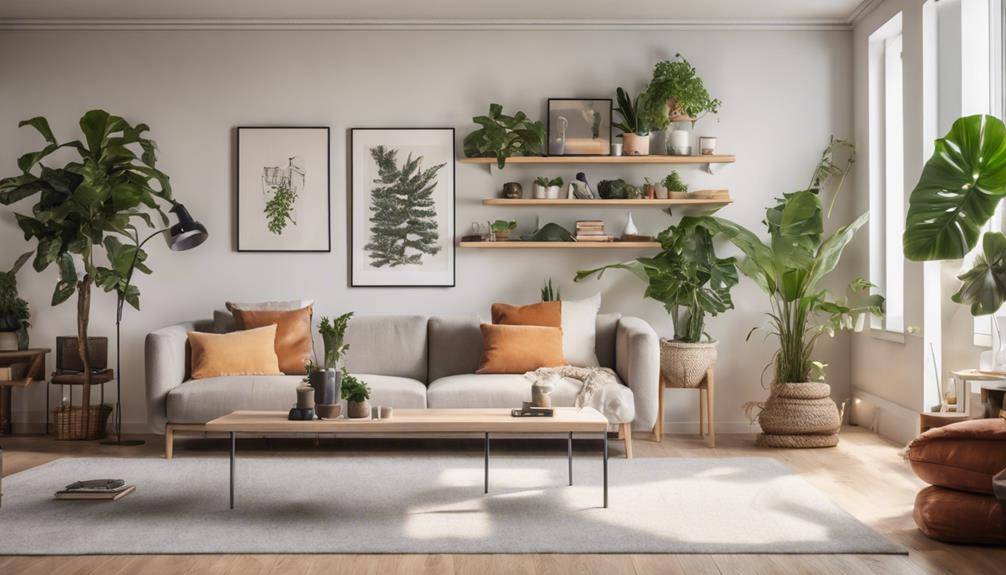
Personalizing your space is essential when moving into a smaller home. It’s important we make our new, cozier environment feel uniquely ours. By focusing on decorative accents and thoughtful color schemes, we can transform a compact area into a warm, inviting sanctuary that reflects our personalities.
To start, let’s think about our color schemes. Lighter shades can make rooms feel more spacious, while bold colors can add character. Mixing and matching these can create a balanced and visually appealing space.
| Item | Function | Tip |
|---|---|---|
| Throw Pillows | Adds comfort and style | Choose patterns that reflect your taste. |
| Wall Art | Personal expression | Opt for pieces that tell your story. |
| Area Rugs | Defines space | Select colors that complement your scheme. |
| Lamps | Enhances ambiance | Pick designs that match your aesthetic. |
Decorative accents play an important role in personalizing our space. Throw pillows, wall art, area rugs, and lamps can dramatically alter the feel of a room. For instance, throw pillows with unique patterns can add a splash of personality to a neutral couch. Similarly, wall art that resonates with you can make a room feel more intimate and personalized.
Area rugs are another excellent way to define different spaces within an open floor plan. They help in creating visual boundaries and adding texture to the room. Finally, lighting can make or break the ambiance of a space. Choose lamps that not only fit your aesthetic but also provide the right kind of light for your activities.



